Rock Farm Penhow
Historic coaching Inn
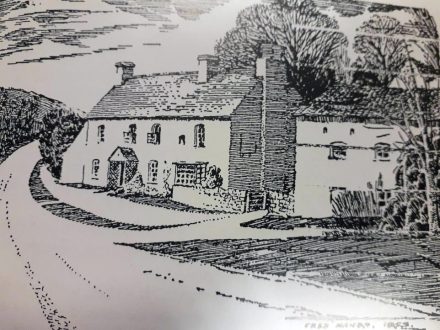
For much of its long and fascinating history, Rock Farm has been better known as a public house. Originally a renowned coaching inn on the toll road between Chepstow and Newport, it continues that legacy today as the popular Rock and Fountain Inn in Penhow. The name is widely believed to come from the rocky hill opposite – home to Penhow Castle – and the fountains that once watered the nearby meadows. Another similar version of the name’s origin suggests it refers to a spring that flowed through the rocks on the hill.
Yet for around a century, The Rock was more than an inn – it was a thriving working farm and an important part of our family’s story. Our mother, Janet, was born in the front room of The Rock in 1937 while her mother, Catherine Skinner, was staying with her brother-in-law Ralph Skinner and his wife Edith. To us, The Rock was always a farm first. Growing up in nearby Langstone, we remember visiting regularly, especially to see the blacksmith with our horses.
Historic Coaching Inn
The Rock and Fountain Inn dates back to 1648, it was then remodelled in the 17th century, when the right-hand section of the building was added. It is a two-story building with a large attic and cellar. Above the cellar door remains a small three-light, ovolo-moulded timber mullioned window, which is said to be an original feature. The ground floor, with its stone-flagged flooring, is built at different levels, reflecting the various stages of its development. The central section to the right of the front entrance is the highest point. the outbuildings included a brew house where the landlord would produce his own ales and a substantial 17th century barn.
The Rock and Fountain sits on the A48 between Chepstow and Usk, positioned at the junction of the old toll road and the modern highway. The inn was once one of the most well-known stops along the old London Road. It is said that 16 horses were always kept in the stable, ready for service. When coaches from Chepstow reached Llanvaches Pike, a horn would sound, prompting the Hostler to bring out a fresh team of four horses. This system was also used for coaches travelling from Newport. One traveller of the day wrote about his journey “Here in a handsome room with a pretty square bay we take our midday meal – a mighty saddle of mutton washed down by the fair wine of Portugal.” This bay window was said to be the exact halfway point between Newport and Chepstow.
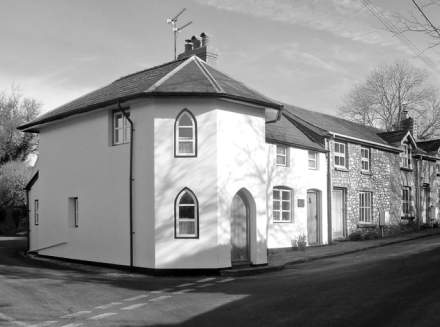
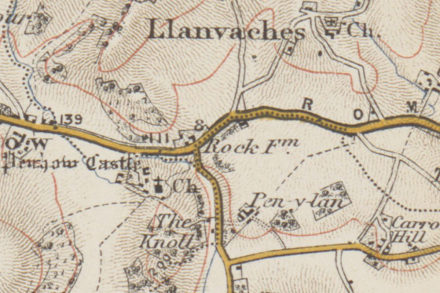
Sold by The Maindee Estate
On 18th August 1848, the Maindee Estate held a major sale of its lands and buildings at the Kings Head Hotel in Newport. The sale included several capital farms and around 3,000 acres of productive land. The auction was conducted by Farebrother, Clark and Lye. Lot 5 was the Rock and Fountain Inn, described as an “Old-Established Inn and Posting House situated midway between Newport and Chepstow.” The inn was occupied by Thomas Dutfield who had been given notice to quit on completion of the sale.
The sale included extensive stalls, stabling, barns, cattle sheds, and various outbuildings, along with 22 acres of freehold land and 73 acres of leased land comprising pasture, arable fields, and woodland. Following the sale, the inn continued to operate for another 20 years, but with coach trade dropping, it was transformed in 1868 by Edmund Dutfield to become Rock Farm.
The Dutfield Family
The Dutfield family played a prominent role in the history of Rock Farm. Edmund Chapp Dutfield, originally from Old Sudbury in Gloucestershire, became the first owner and farmer of the newly established property. Coming from a well-rooted local family – his father having served as the Yeoman of Penhow Castle – Edmund and his wife Mary settled at Rock Farm around 1869, where they raised six children. Initially employing two farmhands, Edmund eventually came to rely on the help of his sons as the family-run farm grew. A moment of unexpected notoriety occurred in 1878 when a Spaniard named Joseph Garcia was arrested at the farm; he was later convicted and hanged for the notorious Llangibby massacre.
Edmund Dutfield remained at Rock Farm until his death on 19th February 1918. He was laid to rest at St. John’s Church, which overlooks the land he worked for nearly five decades. His obituary noted that Edmund had succeeded his father as the Yeoman of Penhow Castle and was a respected member of the local agricultural community, particularly as a leading figure in the Magor Farming Club. Following his passing, his two eldest sons, Sidney and William, inherited the farm and continued the Dutfield legacy at Rock Farm.
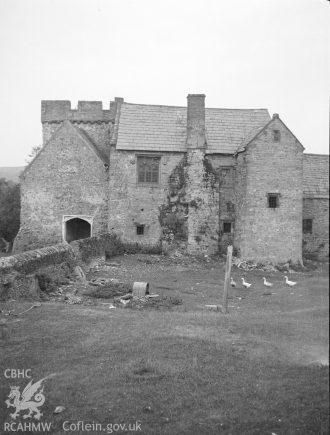
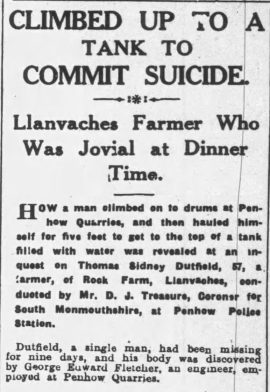
Sidney and William Dutfield worked well together at Rock Farm, ensuring its continued success well into the 20th century. The farm became a notable local landmark, regularly hosting meets for the Llangibby Hounds, which brought distinguished visitors such as the Earl and Countess of Essex and Colonel Linton of St Albans in 1933. However, that same year brought a devastating loss. After being reported missing for seven days, Sidney was tragically found dead in a water tank at a nearby quarry. An inquest concluded his death to be suicide, though the South Wales Argus noted that Sidney had no known financial troubles and had appeared in good spirits, leaving behind lingering questions and a sense of mystery.
Following Sidney’s death, his estate passed to William, who briefly continued farming at The Rock. However, the farm’s fortunes took another blow when a destructive fire swept through the Dutch Barn. The loss proved too great, and William, along with his wife Ethen, made the difficult decision to leave. In January 1934, they sold Rock Farm and auctioned off the livestock before relocating to Chepstow, marking the end of the Dutfield era at Rock Farm.
The Skinners at Rock Farm
In 1937, Ralph and Edith Skinner moved to Rock Farm after spending several years at Court Farm in Lydney. They had five children when they arrived in Penhow; James had been born in Australia 1922 and was followed by Duncan 1924, Rosemary 1926, Robert 1929 and finally Beryl in 1932. The Rock was less than two miles from Ralph’s eldest brother, Wallace, who farmed at Hendrew Farm in Llandevaud. Ralph was from a prominent farming family and had grown up at Abernant Farm in Kemeys Inferior.
Ralph was a tenant farmer and rented the farm from Dr. Morrell Thomas, who had bought it from William Dutfield. The farm was primarily arable, but the Skinner’s also raised sheep and cattle and operated a small milk round serving the local community. The 1939 Register lists Ralph as a mixed farmer and heavy worker, while his 17-year-old son James was recorded as the farm foreman. Ralph made a success of the farm and was able to purchase some land locally. Newspaper reports show Ralph winning prizes for his sheep at local stock shows, including the Severn Tunnel Show in 1953 and for his fruit at the Llandevaud show in the same year.
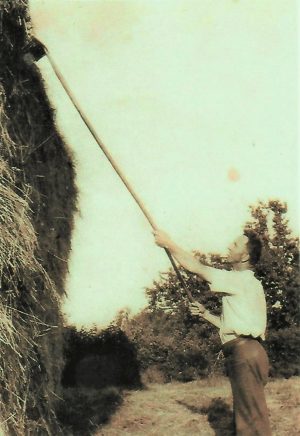
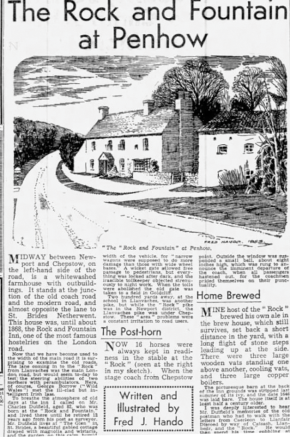
A Visit From Fred Hando
Renowned local historian Fred Hando wrote about Rock Farm on two occasions during its life as a farm, first in 1923 and again in 1953. On his first visit he paid a visit to the Dutfield’s who gave him a tour of the house. Fred wrote about the fine bay windows that gave commanding view up and down the turnpike. One of the windows bore an engraving dated 1820 with the initials S.H.G. The writing was on the outside and upside down, but Fred managed to transcribe it. The inscription, which was a verse featured in an old Irish melody The Fortune-Teller, read:
Down in valley come meet me tonight,
I’ll tell you your fortune truly.
As ever ‘twas told by the new moon’s light
To young maiden shining as newly,
But, for the world, let no one be nigh,
Lest haply the stars should deceive me,
These secrets between me and you and the sky
Should never go farther, believe me.
A Return to Rock Farm
In 1953, while Ralph and Edith Skinner were still living at Rock Farm, Fred returned for a nostalgic visit and took the opportunity to sketch the house. During his stay, he met Charles Dutfield, a retired surveyor who had been born at The Rock in 1871 and was still living locally. Charles recalled vivid memories of the farm’s past, particularly its days as a coaching inn. He pointed out a bell once used to signal drinkers that their coach was about to depart. Fred, however, was saddened to discover that the engraved pane of glass he had admired 30 years earlier had since been broken.
A decade later, on 1st March 1963, the building’s unique historical significance was formally recognised when it was granted Grade II listed status. This listing highlighted its prominent setting, 16th-century origins, and the added heritage value of the former stables. Those very stables received their own Grade II listing on 10th September 1990, having been identified as dating back to the 17th century further cementing the site’s importance as a well-preserved piece of local history.
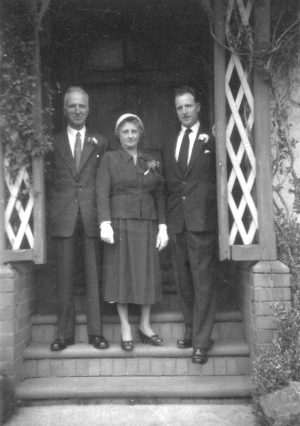

A Pub Once More
After three decades at the farm, Ralph and Edith Skinner retired in 1967, moving to a bungalow built on family-owned land in Llanvaches. They named their new home ‘Iona’ as a tribute to Ralph’s Scottish heritage. Following their departure, new tenants arrived and continued farming The Rock for another 20 years, with a blacksmith, Joe Deacon, also operating from the forge. Eventually, the buildings and a parcel of land were separated from the working farmland, and the farmhouse once again became a public house.
The newly reopened pub initially carried the name Castle Arms before quickly reclaiming its historic title, Rock and Fountain Inn, in 1989. Over the years, the building has undergone significant renovations and expansions under multiple owners.
Changing Tastes at The Rock
One of the most notable transformations occurred in 2010, when a £1 million redevelopment saw The Rock reopen as a steak and seafood restaurant. Its identity continued to evolve, later becoming an Italian restaurant before closing briefly. In June 2014, the Rock and Fountain Inn once again welcomed guests as a pub and restaurant, blending its rich past with modern hospitality.
Old advertisements from the South Wales Argus reveal the pub’s dynamic history through various owners and events. These include promotions for the first-floor Jockey Club Restaurant, lively Monday night jazz sessions, festive banquets in the Tythe Barn, and fine dining experiences in the bar. However, the pub’s journey hasn’t been without challenges. In the 1990s, the A48 road was prone to flooding, and the pub’s historic cellar frequently ended up underwater, costing landlords thousands in damaged stock.
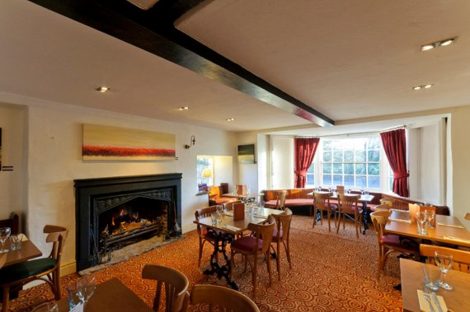

The Rock and Fountain Today
Today, the Rock and Fountain remains a popular stop for both locals and travelers along the A48, well known for its Sunday roasts. Over the years, the venue has expanded significantly, now offering multiple event spaces accommodating up to 150 guests, as well as onsite accommodation.
In 2023, we visited the site and explored the former farmland, which had been divided into two lots and put up for sale. Remnants of its past life as a farm were still visible, including the Dutch Barn and rusting old farm gates, standing as quiet reminders of its agricultural history.
Something to add to the story of the Rock and Fountain? Please email us: research@skinnerfamilyhistory.com
